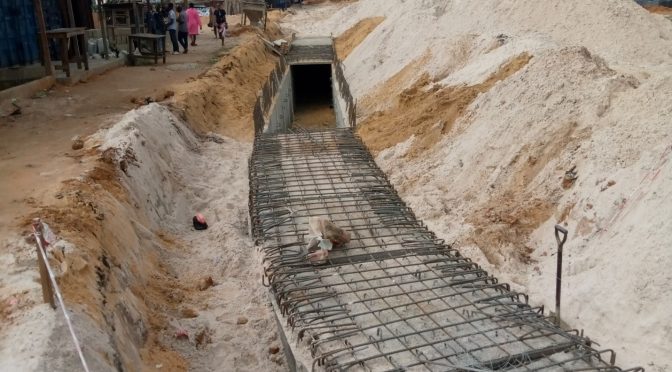By Engineer John Cee Onwualu (FNSE)

There are many important considerations in the design of durable stormwater channels, and the next series of posts considers some of them.

Time of Concentration (Tc)
The time of concentration (Tc), is defined as the longest time it takes the rain falling at the most distant point within a watershed to reach the point under reference. It is one of the most important variables in the estimation of design discharges.
It should be noted that while dealing in watersheds with flat terrain or low topographic slopes, the calculation of Tc, using commonly accepted equations often results in unreasonably large values.
That is, as the slope approaches zero, the travel time approaches infinity. Through research work, it is recommended that an adjustment of 0.005 be made to the slope in both the Kerby and Kirpich methods to allow for more realistic results.
The adjusted slope becomes Slow Slope = So + 0.0005 ….…………… Eq. 3
Therefore, if So ≤ 0.002 m/m (0.2%), a low slope condition exists, and adjustments should be made.
There is also another method of computing Tc, using the application of Kerby formula, which is expressed as:
tc = 1.44(Ln)0.467S-0.235 …………………………………………………………. Eq. 4
Flow Length, L = {[tc/1.44]1/0.467}/ns-0.467 ……………………………. Eq. 4.1
Retardance roughness coefficient,
n = {(tc/0.1.44)1/0.467}/Ls-0.5 ……………… Eq. 4.2
One of the common methods for estimating the Time of Concentration (Tc), is the application of Kirpich formula.
This is expressed as:
tc = 0.0195{L0.770/S0.385} ……………….…………………….………………. Eq. 5
Travel Length, L = {tcS0.385/0.0195}1/0.770 …………….……………. Eq. 5.1
Slope, So = {0.0195L0.770/tc}1/0.385 ……………………………………. Eq. 5.2
where,
tc = is in minutes.
L = maximum length of travel in meters.
S = slope of the catchment in mm-1 over the total length, L.
Kirpich method yields very conservative or short times of concentration that result in high peak runoff rates, especially from the Rational method.

Kerby – Kirpich Method
The Kerby – Kirpich method of computing time of concentration (Tc), is one of the best approaches, which produces Tc estimates that are consistent with watershed time values independently derived from real world storms and runoff hydrographs.
This is expressed as: Tc = Inlet time + Channel flow time Tc = tov + tch …………………………………………………………………… Eq. 6
Tc = tov + (0.0195L0.770/(√so)0.770) ……………………………… Eq. 6.1
Where,
tov = overland flow time tch = channel flow time
The Kerby – Kirpich method for estimating Tc is applicable to watersheds ranging from 0.70Km2 to 389 Km2, main channel lengths between 1600m and 80000m, and main channel slopes of between 0.002 and 0.02 (m/m).
In the next post in the series, we look at OVERLAND FLOW and CHANNEL FLOW.
